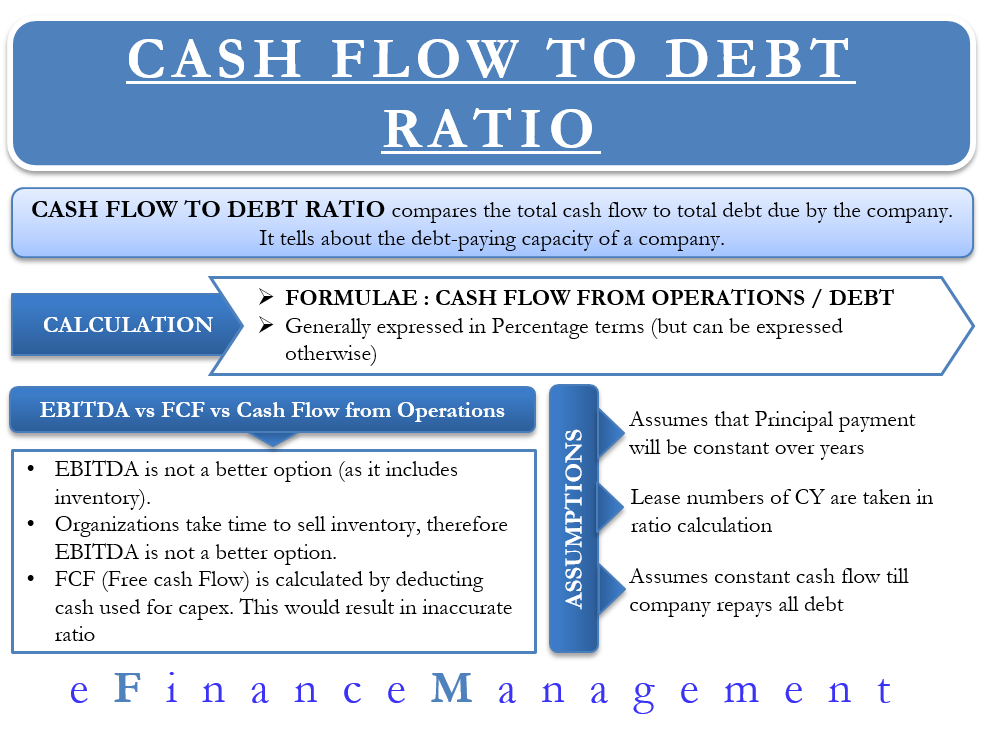Analysts sometimes also examine the ratio of cash flow to just long-term debt. This ratio may provide a more favorable picture of a company’s financial health if it has taken on significant short-term debt. In examining either of these ratios, it is important to remember that they vary widely across industries. A proper analysis should compare these ratios with those of other companies in the same industry.
Part 2: Your Current Nest Egg
In the largest sense, the current CCR tells us whether you are running a profitable business or a stinker. Obviously, if you cannot earn enough income each month to pay your bills, then you have a major problem. Clearly, you’ll have to take action to fix this or throw in the towel. Conveniently, you can view this video to step through the calculation. Amanda Bellucco-Chatham is an editor, writer, and fact-checker with years of experience researching personal finance topics. Specialties include general financial planning, career development, lending, retirement, tax preparation, and credit.
Similar Ratios
Similar to the interest coverage ratio, explained in our interest coverage ratio calculator, it indicates how healthy a company is. Therefore, it is crucial to use the cash debt coverage ratio as a measure of the company’s ability to use the cash it generates to pay off its debt. As you can see in the formula, this ratio compares a company’s operating cash flow with its total liabilities. So divide the net cash of the business that is provided by its operating activities i.e. operating cash flow by the total debt of the business.
Would you prefer to work with a financial professional remotely or in-person?
- Typically, you may combine cash and equivalents on your balance sheet or list them separately.
- Specialties include general financial planning, career development, lending, retirement, tax preparation, and credit.
- For instance, for an asset coverage ratio, a utility company is expected to have at least 1.5, while an industrial firm should have at least 2.
- By monitoring this ratio, you can take proactive steps to paying debt and reducing financial risks.
- An interest coverage ratio of two or higher is generally considered satisfactory.
The cash inflow from activities is the result of business operation within the accounting period. At the same time, the business operation also incurs some liabilities which will remain at the end of the year. So if the cash flow from activities is less than current liabilities, it shows a high risk of liquidating when those liabilities reach the due date. If an organization has a positive debt service ratio, its cash flows are sufficient to cover all debt payments. However, the business must allocate additional funds for annual loan payments if the ratio is negative. Fortunately, you can use a calculator to compute your cash debt coverage ratio and determine if your liquidity is sufficient to pay off your debts.
How is the current cash debt coverage ratio figured out?
The debt-service coverage ratio is a widely used indicator of a company’s financial health, especially for companies that are highly leveraged with debt. Debt service refers to the cash necessary to pay the required principal and interest of a loan during a given period. The cash flow-to-debt ratio examines the ratio of cash flow to total debt.
Cash Flow to Debt Ratio
Also, ensure that you maintain records over several years to observe any particular trend. Sometimes, there could be circumstances beyond your control that led to a cost that is easily traced to an individual cost object is called an undesirable ratio. Regardless, regularly checking the ratio helps to see if the financial is improving or getting worse to facilitate a more informed decision.
An accountant should see the proportion between the net operating income and the debt service cost. If you have figures for short and long term debt, open the Total debt components section below to calculator the total debt. Analysts and investors may study any changes in a company’s coverage ratio over time to assess the company’s financial position.
A low ratio might seem unattractive to investors, but it could be an indicator that the company is becoming more able to pay off its debts based on its operations. A ratio that is significantly lower than the industry average could suggest that the company is facing financial difficulties or operating in a highly competitive market. This approach allows investors to identify both the factors clearly, the firm’s ability to pay dividends on time, and forecast the firm’s future liquidity position as well. These ratios (including profitability ratios, liquidity ratios, solvency ratios, and activity ratios) act as a metric to assess the entity’s financial performance.

